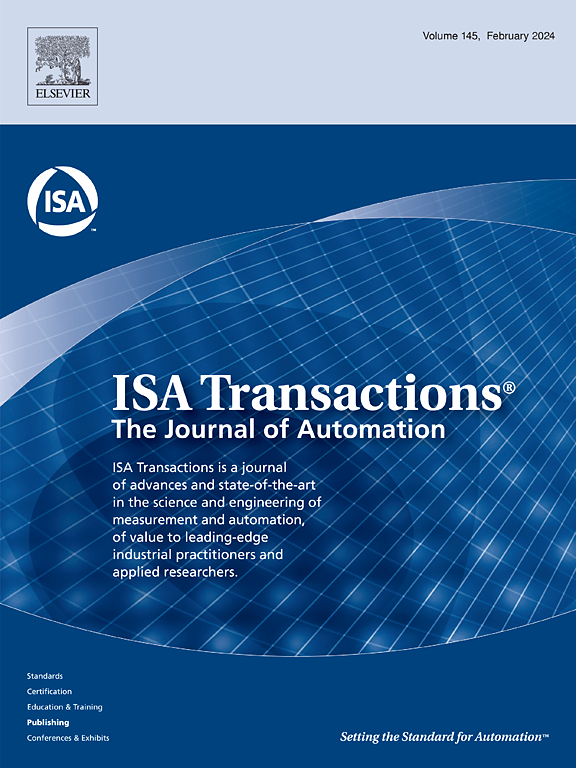通过斯图尔特并联机构实现对接机器人的自适应阻抗控制。
IF 6.5
2区 计算机科学
Q1 AUTOMATION & CONTROL SYSTEMS
引用次数: 0
摘要
本文针对地面无人飞行器在执行自主对接任务时由于外部环境干扰导致碰撞接触力过大的问题,提出了一种对接机器人自适应阻抗控制策略,即基于斯图尔特平台开发的锁定机制方案。首先,介绍了对接机器人系统,并构建了对接机器人的逆运动学模型。其次,为解决对接过程中碰撞接触力过大的问题,我们设计了一种自适应阻抗控制算法,包括接触力稳态误差模型、自适应补偿控制器设计和系统稳定性分析,从而实现主动顺应控制。最后,在对接机器人上进行了一些仿真和实验。与传统阻抗控制相比,自适应阻抗控制降低了对接碰撞接触力,实现了顺从控制。未来,实验结果将为无人飞行器的自主对接提供一种新的对接方法,也为智能飞行器的发展提供参考。本文章由计算机程序翻译,如有差异,请以英文原文为准。
Adaptive impedance control for docking robot via Stewart parallel mechanism
This paper provides an adaptive impedance control strategy about docking robot, a locking mechanism scheme based on the Stewart platform developing for the problem of excessive collision contact force caused by external environmental interference during autonomous docking tasks of ground unmanned vehicles. First, the docking robot system was introduced, and an inverse kinematics model of the docking robot was constructed. Next, to solve the problem of excessive collision contact force during docking, we have designed an adaptive impedance control algorithm, which includes a steady-state error model of contact force, an adaptive compensation controller design, and system stability analysis, thus achieving active compliance control. Finally, some simulations and experiments were conducted on the docking robot. Compared with traditional impedance control, adaptive impedance control reduces docking collision contact force and achieves compliant control. In the future, the experimental results provide a new docking approach for autonomous docking of unmanned vehicles, and also serve as a reference for the development of intelligent vehicles.
求助全文
通过发布文献求助,成功后即可免费获取论文全文。
去求助
来源期刊

ISA transactions
工程技术-工程:综合
CiteScore
11.70
自引率
12.30%
发文量
824
审稿时长
4.4 months
期刊介绍:
ISA Transactions serves as a platform for showcasing advancements in measurement and automation, catering to both industrial practitioners and applied researchers. It covers a wide array of topics within measurement, including sensors, signal processing, data analysis, and fault detection, supported by techniques such as artificial intelligence and communication systems. Automation topics encompass control strategies, modelling, system reliability, and maintenance, alongside optimization and human-machine interaction. The journal targets research and development professionals in control systems, process instrumentation, and automation from academia and industry.
 求助内容:
求助内容: 应助结果提醒方式:
应助结果提醒方式:


